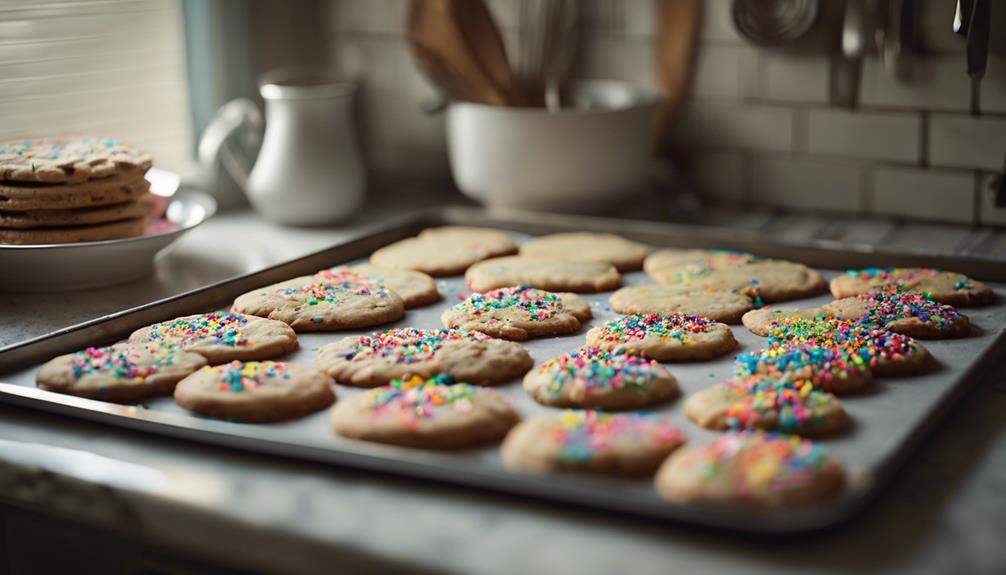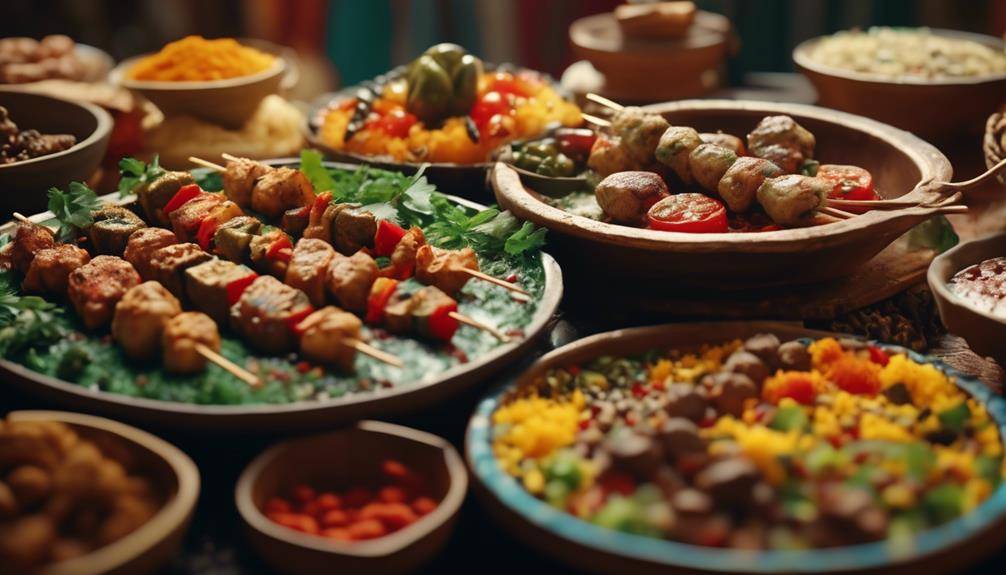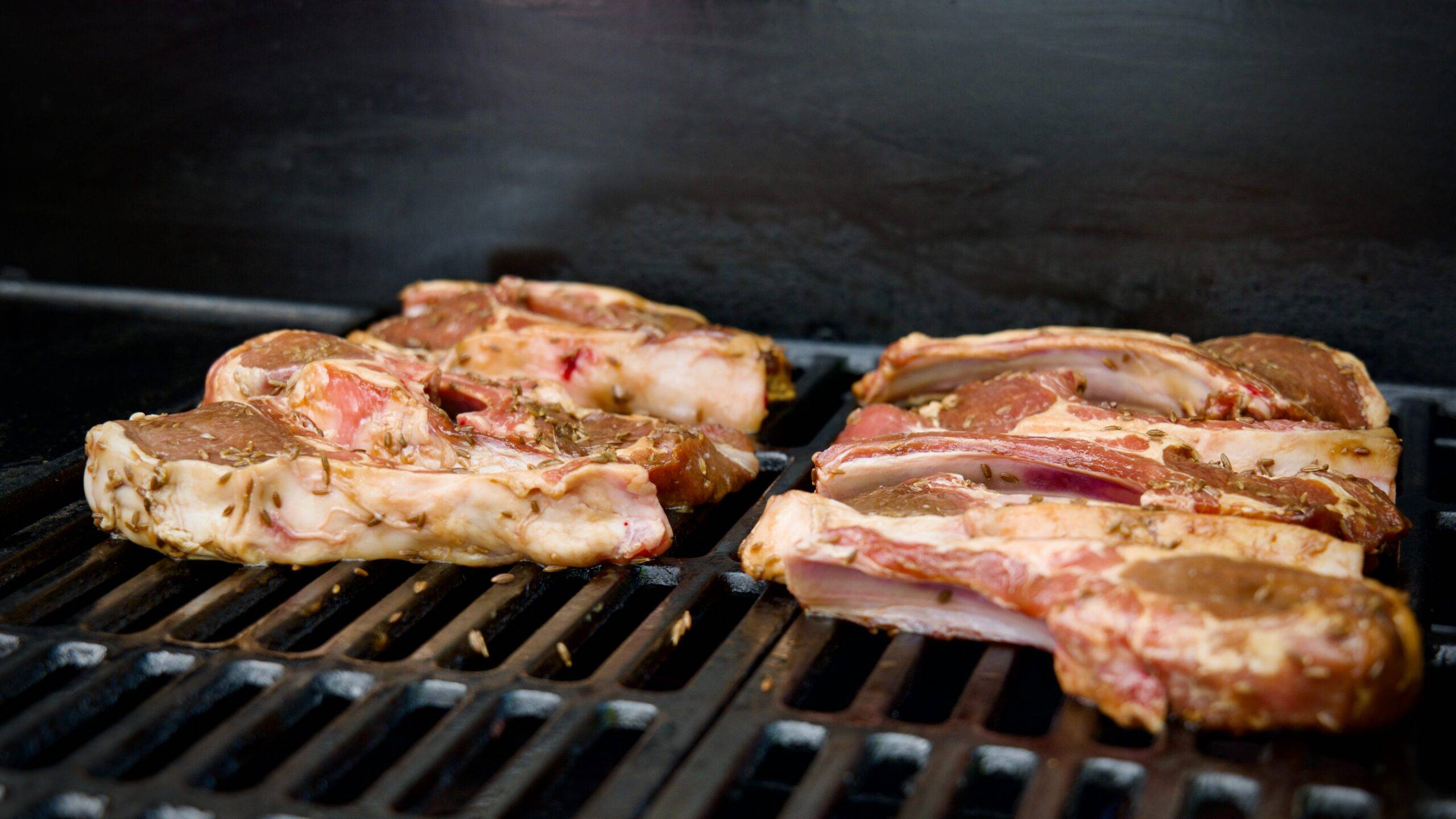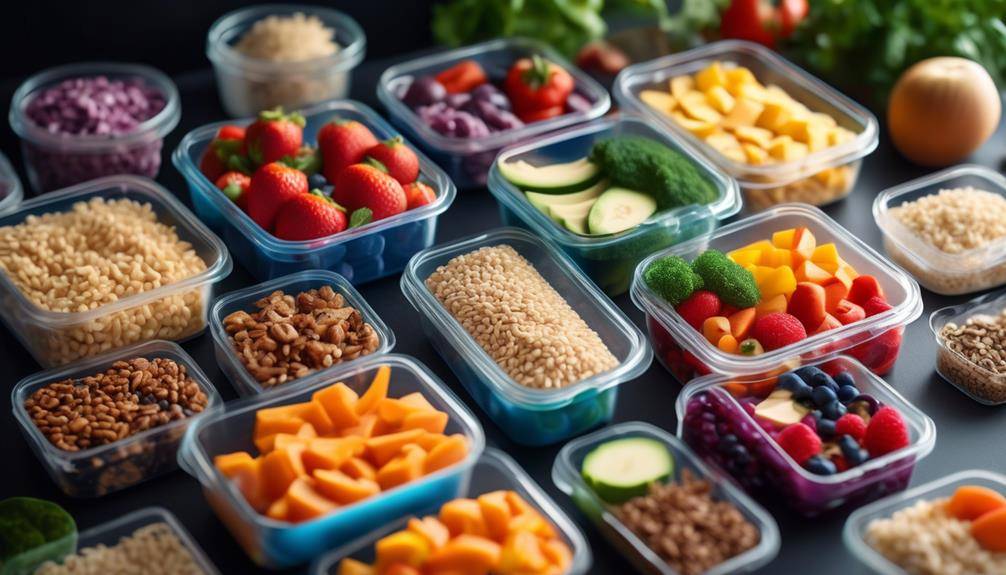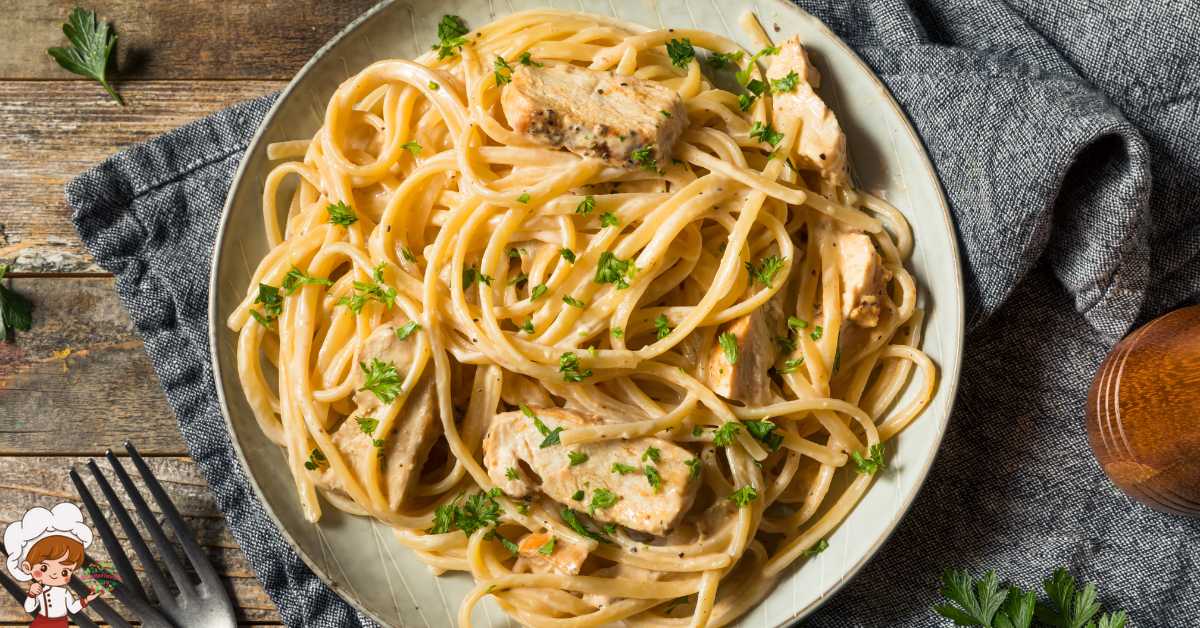Amazing Gluten-Free Diet for Celiac Disease
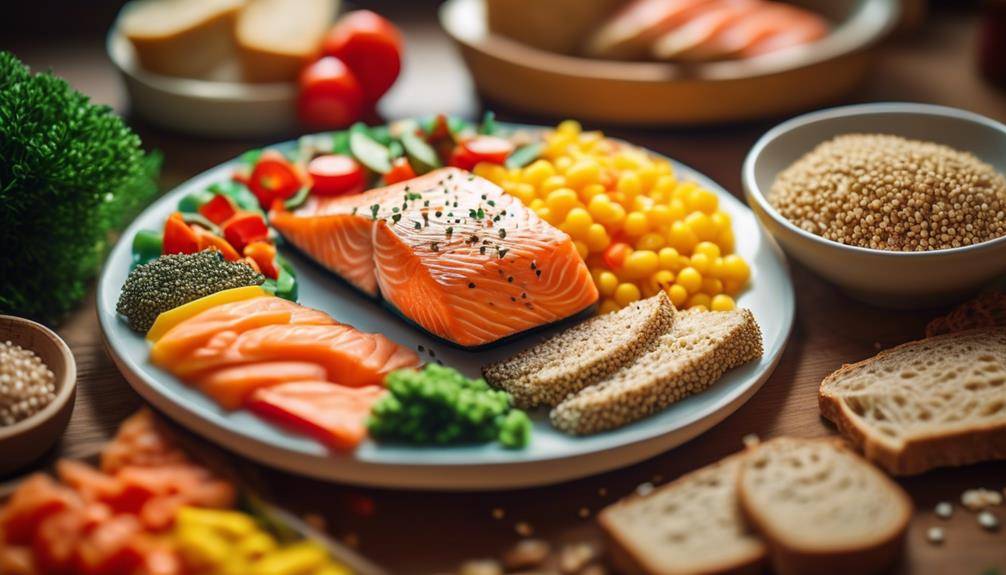
Amazing Gluten-Free Diet for Celiac Disease; So, you’ve recently discovered that you have celiac disease, and now you’re faced with the daunting task of adjusting your diet to a gluten-free one. While it may seem overwhelming at first, fear not! This discussion will guide you through the ins and outs of a gluten-free diet specifically tailored for individuals with celiac disease. From understanding the disease itself to navigating social situations, we’ll cover it all. Get ready to discover a whole new world of delicious possibilities that will leave you craving for more.
Understanding Celiac Disease
To truly understand celiac disease, it is essential to grasp the intricate relationship between gluten and the human body’s immune system. Celiac disease is an autoimmune disorder that occurs in individuals who cannot tolerate gluten, a protein found in wheat, barley, and rye. When a person with celiac disease consumes gluten, their immune system mistakenly attacks the lining of the small intestine, leading to inflammation and damage.
One of the key aspects of understanding celiac disease is recognizing its symptoms. Common symptoms include abdominal pain, bloating, diarrhea, and weight loss. However, it is important to note that celiac disease can also manifest with non-gastrointestinal symptoms such as fatigue, anemia, osteoporosis, and even neurological issues. This wide range of symptoms can often make diagnosis challenging, as they can be mistaken for other conditions. If you suspect you may have celiac disease, it is crucial to consult a healthcare professional for an accurate diagnosis.
Once diagnosed, the mainstay of treatment for celiac disease is adhering to a strict gluten-free diet. This means avoiding all sources of gluten, including bread, pasta, cereals, and even products that may contain hidden gluten. It is important to read food labels carefully and be aware of potential cross-contamination. Additionally, seeking guidance from a registered dietitian who specializes in celiac disease can be beneficial in learning how to navigate the gluten-free lifestyle and ensure proper nutrition.
Identifying Hidden Sources of Gluten
Be vigilant in your quest to maintain a gluten-free diet by learning how to identify hidden sources of gluten in your food. While gluten-free labeling regulations have improved over the years, it’s still important to be aware of potential hidden sources of gluten that may not be explicitly mentioned on food labels. Here are four key areas to pay attention to:
- Cross-contamination: Even if a product is labeled gluten-free, it could still come into contact with gluten during manufacturing or preparation. This can happen in shared facilities or through the use of shared equipment. To minimize the risk of cross-contamination, look for products that are certified gluten-free and produced in dedicated gluten-free facilities.
- Ingredients: Gluten can hide in unexpected places, such as sauces, seasonings, and condiments. Always read ingredient labels carefully, paying attention to any mention of wheat, barley, rye, or other gluten-containing grains. Additionally, be cautious of ingredients that may contain hidden gluten, such as modified food starch, maltodextrin, or hydrolyzed vegetable protein.
- Medications: It’s not just food that can contain hidden gluten. Medications, both prescription and over-the-counter, may also contain gluten as a filler or binding agent. Always check with your pharmacist or healthcare provider to ensure that any medications you take are gluten-free. They can help you find suitable alternatives if necessary.
- Dining out: When eating out, it can be challenging to identify hidden sources of gluten. Be sure to communicate your dietary needs to the restaurant staff and ask about their gluten-free options. Additionally, educate yourself about common sources of hidden gluten in restaurant dishes, such as marinades, sauces, and fried foods.
Foods to Avoid on a Gluten-Free Diet
When following a gluten-free diet for celiac disease, it is important to be aware of common gluten-containing foods and hidden sources of gluten. Some common gluten-containing foods include wheat, barley, rye, and triticale. It is also important to carefully read food labels, as gluten can be found in unexpected places such as sauces, dressings, and processed foods. By being mindful of these foods and hidden sources of gluten, you can effectively avoid them and maintain a healthy gluten-free diet.
Common Gluten-Containing Foods
Eliminating common gluten-containing foods is a crucial step in maintaining a gluten-free diet for individuals with celiac disease. It is important to be aware of the foods that contain gluten in order to avoid any potential health risks. Here are four common gluten-containing foods that you should steer clear of:
- Wheat: This includes all forms of wheat, such as bread, pasta, and cereal. Look for gluten-free alternatives made from rice, corn, or quinoa.
- Barley: Barley is often found in soups, stews, and beer. Opt for gluten-free grains like millet or sorghum instead.
- Rye: Rye is commonly found in bread, crackers, and some types of whiskey. Explore gluten-free options like oats or amaranth.
- Triticale: Triticale is a hybrid of wheat and rye. Avoid products that contain triticale and choose gluten-free grains like buckwheat or teff.
Hidden Sources of Gluten
To maintain a gluten-free diet for individuals with celiac disease, it is important to be aware of hidden sources of gluten, as they can pose a risk to your health. While it is crucial to avoid obvious gluten-containing foods such as bread, pasta, and baked goods, there are several other products that may contain hidden gluten. Cross contamination risks are high, especially when dining out or using shared kitchen utensils. It is essential to read labels carefully and look for gluten-free certifications.
Additionally, some unexpected sources of gluten include soy sauce, certain medications, processed meats, and even some cosmetics. To navigate these potential pitfalls, seeking support from a registered dietitian or joining a support group can provide valuable guidance and resources. Remember, staying vigilant and well-informed is key to successfully maintaining a gluten-free lifestyle.
Gluten-Free Grains and Alternatives
Gluten-free grains and alternatives offer a wide range of options for individuals with celiac disease. Following a gluten-free diet can be challenging, but with the right knowledge and resources, you can still enjoy a variety of delicious and nutritious meals. Here are some gluten-free grains and alternatives that you can incorporate into your diet:
- Quinoa: This versatile grain is packed with protein, fiber, and essential nutrients. It can be used as a base for salads, added to soups, or even used as a substitute for rice.
- Brown rice: A staple in many gluten-free diets, brown rice is a great source of complex carbohydrates and provides a good amount of fiber. It can be enjoyed as a side dish, used in stir-fries, or as a base for grain bowls.
- Buckwheat: Despite its name, buckwheat is not related to wheat and is naturally gluten-free. It is rich in antioxidants and can be used to make gluten-free pancakes, noodles, and even bread.
- Amaranth: This ancient grain is highly nutritious and contains high levels of protein and fiber. It can be cooked and used as a porridge, added to baked goods, or used as a thickener in soups and stews.
When it comes to gluten-free pasta options, there are several alternatives available such as rice, corn, quinoa, and chickpea pasta. These options are made from gluten-free grains and legumes, providing a satisfying alternative to traditional wheat pasta. However, it is important to read labels carefully as some brands may still contain traces of gluten.
When baking gluten-free, it can be challenging to achieve the same texture and taste as traditional baked goods. Here are some gluten-free baking tips to help you get started:
- Use a blend of gluten-free flours: Combining different gluten-free flours such as rice flour, almond flour, and tapioca flour can help mimic the texture of wheat flour.
- Add xanthan gum or psyllium husk: These ingredients act as binders and help improve the texture of gluten-free baked goods.
- Increase liquid and fat: Gluten-free flours tend to absorb more liquid, so adding extra liquid and fat can help prevent dryness.
- Experiment with alternative ingredients: Try using ingredients like applesauce, mashed bananas, or yogurt to add moisture and flavor to your baked goods.
Navigating Dining Out With Celiac Disease
When it comes to enjoying a meal outside of your home, navigating dining out with celiac disease requires careful consideration and awareness of gluten-containing ingredients. While it may seem challenging at first, with the right strategies in place, you can still have an enjoyable and safe dining experience.
One of the first things you can do is research restaurants in your area that offer gluten-free options. Many restaurants now have gluten-free menus or indicate which dishes are safe for those with celiac disease. This can help you narrow down your choices and ensure that you have meal options available to you.
When you arrive at the restaurant, it’s important to communicate your dietary needs to the waitstaff. Explain that you have celiac disease and cannot consume any foods that contain gluten. Ask questions about ingredients and how dishes are prepared to ensure they are safe for you to eat. It’s also a good idea to inform the staff about the importance of preventing cross-contamination during food preparation.
In some cases, it may be helpful to call the restaurant ahead of time to discuss your dietary needs. This allows the staff to be prepared and gives you an opportunity to ask any questions you may have about their menu and food preparation practices. By taking this proactive step, you can feel more confident about dining out and reduce the risk of accidentally consuming gluten.
Remember to be patient and understanding, as not all restaurants may be able to accommodate your needs. In such cases, it’s better to err on the side of caution and find another dining option that can provide you with safe meal choices. Lastly, it’s always a good idea to carry gluten-free snacks with you, just in case you cannot find suitable options when dining out.
Tips for Grocery Shopping on a Gluten-Free Diet
When following a gluten-free diet, there are several practical tips to keep in mind while grocery shopping. These tips will help you navigate the aisles and find the right products for your gluten-free lifestyle. Here are four key points to remember:
- Read labels carefully: When shopping for gluten-free products, it’s important to read labels thoroughly. Look for the “gluten-free” label or certifications from trusted organizations. Check the ingredient list for any potential sources of gluten, such as wheat, barley, or rye. Be aware that some products may be cross-contaminated with gluten during manufacturing, so look for products that are specifically labeled as “certified gluten-free.”
- Stick to the perimeter: The outer edges of the grocery store typically contain fresh produce, meat, and dairy, which are naturally gluten-free. Focus on filling your cart with fruits, vegetables, lean proteins, and dairy products to ensure a well-balanced gluten-free diet.
- Plan your meals in advance: Before heading to the grocery store, take some time to plan your meals for the week. This will help you create a shopping list and ensure that you have all the necessary ingredients for gluten-free meal ideas. By planning ahead, you can avoid impulse purchases and stay on track with your gluten-free diet.
- Be prepared for eating out: While grocery shopping is important for maintaining a gluten-free lifestyle, it’s also essential to be prepared for eating out on a gluten-free diet. Research restaurants in advance and look for those that offer gluten-free options or have dedicated gluten-free menus. When dining out, communicate your dietary restrictions to the waitstaff and ask questions about how the food is prepared to avoid cross-contamination.
Gluten-Free Baking and Cooking Substitutions
Consider these helpful substitutions to create delicious gluten-free baked goods and meals. When it comes to gluten-free baking, there are a few techniques that can help you achieve the desired texture and flavor. One important aspect is the choice of alternative flours for gluten-free cooking.
Firstly, when substituting regular flour in your recipes, it is essential to use a gluten-free flour blend. These blends are made up of various gluten-free flours, such as rice flour, potato starch, tapioca flour, and sorghum flour. They mimic the properties of wheat flour and provide the necessary structure and texture to your baked goods.
Another option is to use nut flours, such as almond flour or hazelnut flour. These flours add a rich, nutty flavor to your dishes and can be used in a variety of baked goods, from cookies to cakes. However, keep in mind that nut flours can be denser, so it is often recommended to combine them with other gluten-free flours for optimal results.
If you’re looking for a lighter texture, consider using coconut flour. It is highly absorbent, so you’ll need to adjust the amount of liquid in your recipe accordingly. Coconut flour also adds a subtle sweetness to your baked goods.
For savory dishes, you can experiment with alternative flours like chickpea flour or quinoa flour. These flours add a unique flavor and can be used in dishes like pancakes, bread, or even as a coating for fried foods.
Ensuring a Nutritious Gluten-Free Diet
To ensure a nutritious gluten-free diet for celiac disease, it is important to focus on consuming essential nutrients. This includes foods that are rich in vitamins, minerals, fiber, and protein. When meal planning, aim to incorporate a variety of gluten-free grains, fruits, vegetables, lean proteins, and dairy or dairy alternatives to meet your nutritional needs.
Essential Nutrients for Celiac
Ensuring a nutritious gluten-free diet is essential for individuals with Celiac disease to obtain the necessary nutrients and maintain their health. When following a gluten-free diet, it is important to focus on consuming a variety of nutrient-rich foods to meet your body’s needs. Here are four essential nutrients for a balanced gluten-free diet:
- Protein: Choose lean sources such as poultry, fish, beans, and nuts to support muscle growth and repair.
- Fiber: Include gluten-free whole grains like quinoa, brown rice, and buckwheat to maintain regular bowel movements and support gut health.
- Vitamins and minerals: Opt for fruits, vegetables, and fortified gluten-free products to ensure an adequate intake of vitamins A, C, D, E, and minerals like iron, calcium, and zinc.
- Omega-3 fatty acids: Incorporate fatty fish like salmon or trout, flaxseeds, and chia seeds to support brain health and reduce inflammation.
Meal Planning Tips
When planning your meals on a gluten-free diet, focus on incorporating nutrient-rich foods that support your overall health and well-being. Meal prep can be a helpful strategy to ensure that you have nutritious gluten-free options readily available. Start by creating a weekly meal plan and make a shopping list of gluten-free ingredients. Look for gluten-free recipes that are both delicious and nutritious. Incorporate a variety of fruits, vegetables, lean proteins, and whole grains into your meals.
Choose gluten-free grains like quinoa, brown rice, and gluten-free oats. Don’t forget to include healthy fats from sources such as avocados, nuts, and olive oil. Experiment with different herbs and spices to add flavor to your gluten-free meals. By focusing on nutrient-rich foods and meal prep, you can enjoy a delicious and well-balanced gluten-free diet.
Managing Celiac Disease in Social Situations
Navigating social situations can be challenging when managing celiac disease. It’s important to find ways to enjoy parties and eating out with friends while still adhering to a gluten-free diet. Here are some practical tips to help you manage celiac disease in social situations:
- Plan ahead: Before attending a party or going out to eat, do some research. Find out if there will be gluten-free options available or if you need to bring your own food. Contact the host or the restaurant in advance to discuss your dietary needs.
- Communicate your needs: Don’t be afraid to let others know about your celiac disease and the importance of avoiding gluten. Talk to your friends and family, and educate them about the condition. This will help them understand and support your dietary restrictions.
- Be prepared: Always carry gluten-free snacks with you. In social situations where gluten-free options might be limited, having your own snacks can ensure that you have something safe to eat. This will prevent you from feeling left out or hungry.
- Be confident in making choices: When eating out with friends, don’t be afraid to ask questions about ingredients or request modifications to make a dish gluten-free. Most restaurants are accommodating and willing to work with you to ensure a safe meal. Stick to foods that are naturally gluten-free, such as fruits, vegetables, lean meats, and fish.
Common Challenges and How to Overcome Them
When following a gluten-free diet for celiac disease, you may encounter common challenges that can make it difficult to stick to your dietary restrictions. One challenge is dining out, as it can be challenging to find gluten-free options and ensure that cross-contamination risks are minimized. Additionally, social situations can also pose challenges, as you may feel pressured to eat foods that contain gluten. However, with careful planning, communication, and education, you can overcome these challenges and successfully navigate the gluten-free lifestyle.
Dining Out Struggles
Successfully managing a gluten-free diet while dining out can present numerous challenges, but with a little preparation and knowledge, you can overcome them and enjoy a worry-free meal. Here are some common struggles you may encounter when dining out and how to overcome them:
- Limited gluten-free options: It can be intimidating to find gluten-free options on a menu, but don’t be afraid to ask for modifications or substitutions. Many restaurants are now offering gluten-free menus or labeling options on their regular menus.
- Cross-contamination: This is a significant concern for individuals with celiac disease. When dining out, always communicate your dietary needs to the server and ask about the kitchen’s practices to avoid cross-contamination. It’s crucial to ensure that your food is prepared in a separate area with clean utensils and cooking surfaces.
- Lack of knowledge or understanding: Some restaurant staff may not be familiar with celiac disease or gluten-free diets. Take the time to educate them about your needs and the importance of avoiding gluten. Be patient and understanding, and don’t hesitate to ask to speak with a manager or chef if necessary.
- Anxiety and social pressure: Dining out with friends or family can sometimes trigger anxiety about sticking to your gluten-free diet. Remember that your health comes first, and there are plenty of gluten-free options available. Be confident in your choices, and don’t let social pressure sway you from following your dietary restrictions.
Social Situations
Overcoming challenges in social situations while maintaining a gluten-free diet can be achieved with a few simple strategies. Managing invitations and dealing with skepticism are common challenges that individuals with celiac disease face. When it comes to managing invitations, it’s important to communicate your dietary needs to your friends and family. Let them know about your condition and explain why it is necessary for you to follow a gluten-free diet. This will help them understand and accommodate your needs.
Additionally, offering to bring a dish that is gluten-free can ensure that you have something safe to eat at social gatherings. Dealing with skepticism can be difficult, but it’s important to stay confident in your decision to follow a gluten-free diet for your health. Educate others about celiac disease and the importance of avoiding gluten. Sharing credible resources and personal experiences can help dispel any doubts or misconceptions. Remember, maintaining a gluten-free diet is essential for your well-being, and with proper communication and education, you can navigate social situations successfully.
Cross-Contamination Risks
To minimize the risk of cross-contamination while maintaining a gluten-free diet, it is important to implement practical strategies in various settings. Here are some tips to help you prevent cross-contamination and stay safe:
- Separate utensils and cookware: Use separate cutting boards, toasters, and baking sheets for gluten-free items to avoid cross-contamination with gluten-containing foods.
- Clean and sanitize surfaces: Thoroughly clean countertops, kitchen tools, and appliances to remove any traces of gluten. Be aware of hidden sources of gluten, such as wooden cutting boards or shared condiments.
- Read labels carefully: Look for “gluten-free” certification symbols on food packaging. Gluten-free certification ensures that products meet strict standards and have undergone testing for gluten contamination.
- Communicate your needs: When dining out or attending social gatherings, inform the staff about your dietary restrictions and the importance of avoiding cross-contamination. Ask questions about food preparation methods and ingredients to ensure your meal is safe.
Seeking Support and Resources for Celiac Disease
If you have been diagnosed with celiac disease, finding support and accessing resources can greatly enhance your journey towards managing and living a gluten-free lifestyle. Dealing with a chronic condition like celiac disease can feel overwhelming at times, but you don’t have to go through it alone. Support groups and online forums can provide you with a sense of community, valuable information, and practical tips to navigate the challenges of living gluten-free.
Support groups are a fantastic resource for individuals with celiac disease. These groups consist of people who understand the unique struggles and triumphs that come with managing a gluten-free diet. They can offer emotional support, share personal experiences, and provide practical advice on how to cope with various situations. Support groups often organize meetings, where you can engage in discussions, ask questions, and learn from others who have been living with celiac disease for a longer time. Additionally, support groups may host educational events, inviting healthcare professionals and experts to share their knowledge on gluten-free living.
Online forums are another valuable resource for individuals with celiac disease. These platforms provide a virtual space for people to connect and engage with others who are facing similar challenges. You can ask questions, share your experiences, and receive advice from a diverse group of individuals from around the world. Online forums also often have sections dedicated to sharing gluten-free recipes, product recommendations, and tips for dining out or traveling while managing celiac disease.
When seeking support and resources for celiac disease, it is essential to choose reputable sources and forums moderated by healthcare professionals or experienced individuals. Remember that every individual’s experience with celiac disease is unique, so it is crucial to consult with your healthcare team for personalized advice and guidance. By connecting with others through support groups and online forums, you can gain knowledge, find encouragement, and build a network of support to help you successfully navigate your gluten-free journey.
Frequently Asked Questions: Amazing Gluten-Free Diet for Celiac Disease
Can a Gluten-Free Diet Cure Celiac Disease?
A gluten-free diet can effectively manage celiac disease symptoms, but it cannot cure the condition. Long-term adherence to a gluten-free diet is essential to prevent damage to the small intestine and maintain overall health.
Are There Any Medications Available to Treat Celiac Disease?
There are medication options available to treat celiac disease, but they are mainly used to manage symptoms and complications rather than cure the disease. It’s important to discuss potential side effects with your doctor.
How Common Is Celiac Disease Among Children?
Celiac disease is relatively common among children, with prevalence rates varying by region. It is important to recognize the symptoms early and manage them through a gluten-free diet, which is the primary treatment.
Can I Still Consume Alcoholic Beverages on a Gluten-Free Diet?
Yes, you can still enjoy alcoholic beverages on a gluten-free diet. There are gluten-free beer options available, as well as other spirits like wine and certain liquors. Just be sure to check labels and ingredients.
Are There Any Gluten-Free Fast Food Options Available?
Yes, there are gluten-free fast food options available. Many popular restaurant chains now offer gluten-free menus or specific gluten-free items, making it easier to find safe and convenient options for a gluten-free diet.
Conclusion
In conclusion, maintaining a gluten-free diet is crucial for individuals with celiac disease. By understanding the disease, identifying hidden sources of gluten, and knowing which foods to avoid, one can effectively manage their condition. It is important to explore gluten-free grains and alternatives to ensure a nutritious diet, and to navigate dining out and social situations with caution. By seeking support and resources, individuals with celiac disease can overcome common challenges and lead a fulfilling, gluten-free lifestyle.



